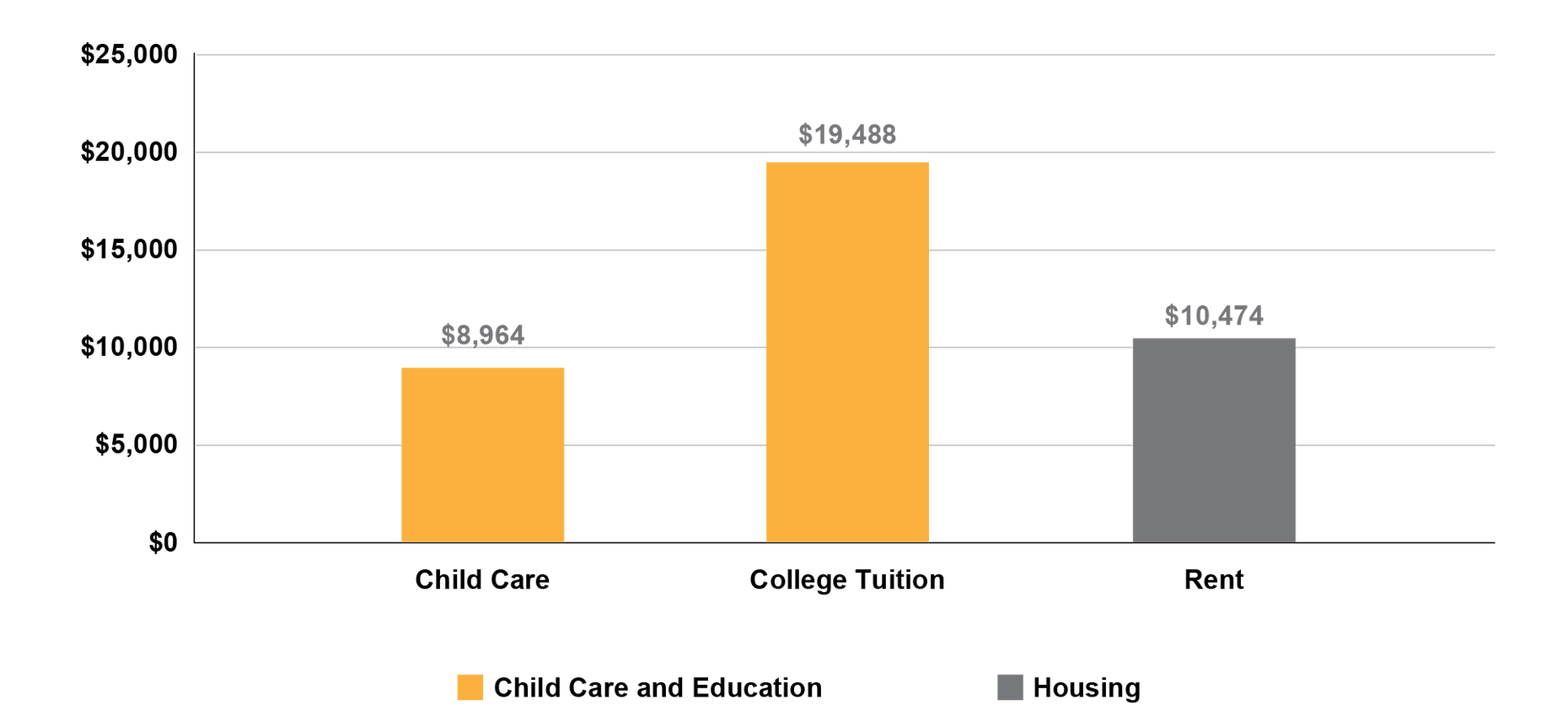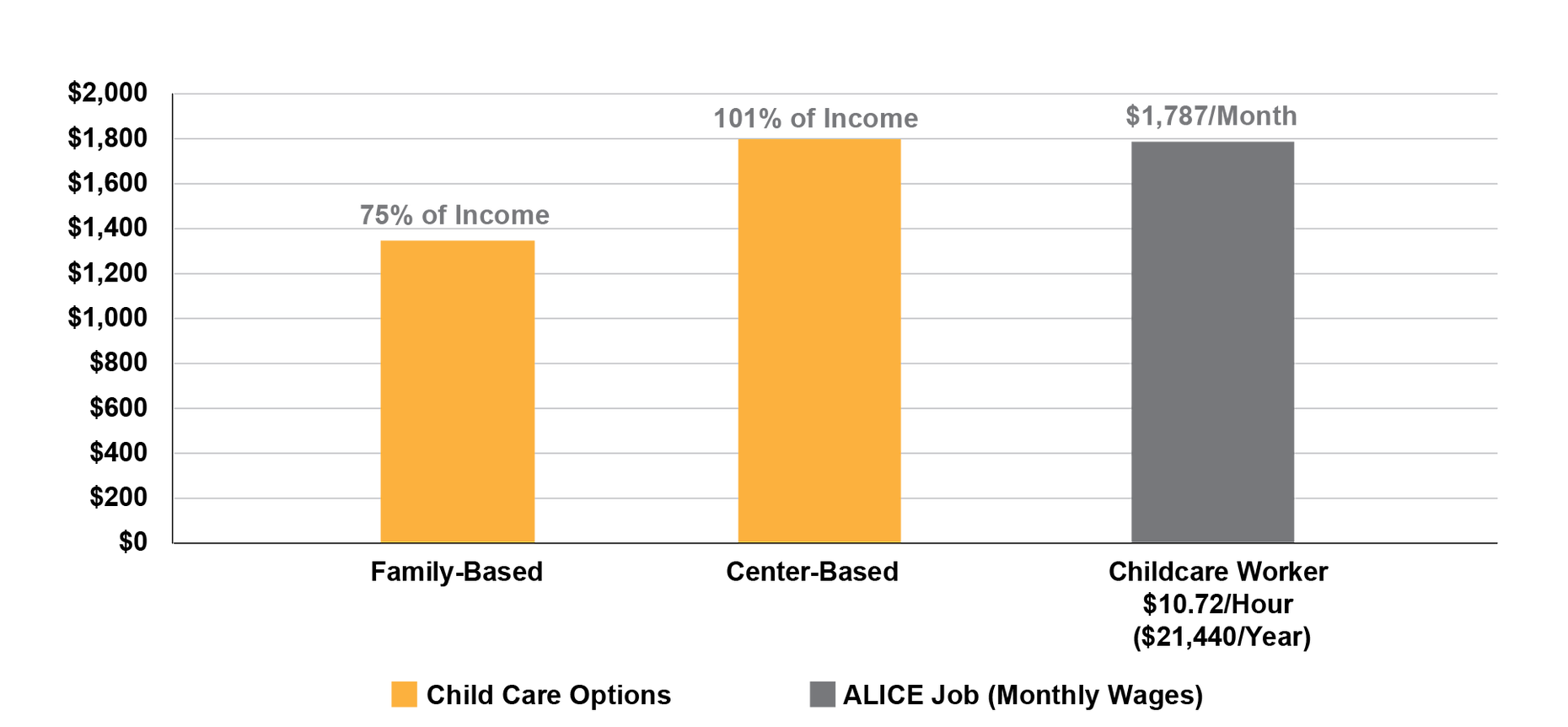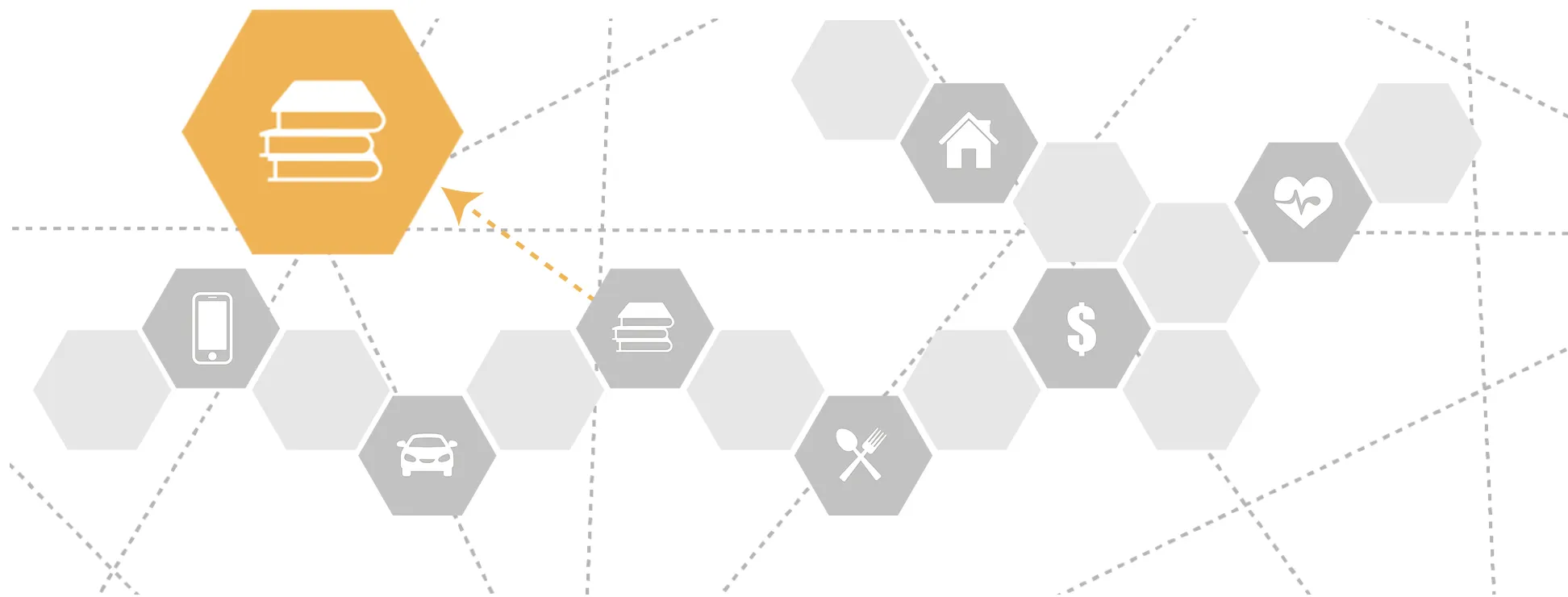
|
Housingclick to view |

|
Health Careclick to view |

|
Child Care and Educationclick to view |

|
Technologyclick to view |

|
Foodclick to view |

|
Taxesclick to view |

|
Transportationclick to view |
||
Introduction
Child Care
Typically, one or more adults in an ALICE household must work to support the family budget and enhance their future earning potential. As a result, the demand for child care is widespread. Program offerings include both informal and formal care arrangements for children from birth through age four, and they vary widely in terms of setting, cost, availability, and quality.1
A family’s choice of child care may depend on many factors. There is no “best” or “optimal” kind of care, just care that works for the individual family’s situation. However, certain kinds of early care — especially ones that offer enrichment programs or activities — have been shown to foster healthy, appropriate cognitive development in young children.
While there is a lot at stake for ALICE families in finding appropriate and quality child care, barriers to affordability, access, eligibility for assistance, and scheduling can put such care out of reach.2
Challenges in one area of a family's budget have consequences in other areas. Nowhere is this more apparent than in child development, which requires safe housing; reliable transportation; nutritious food; and quality child care, education, and health care. When there is not enough income to provide these essentials, children’s development and future potential can be negatively impacted.
Child care is often the second most expensive item in the ALICE family budget, after the cost of housing. And each of these costs is dwarfed by the cost of college tuition. As shown in the figure below, nationwide in 2017, the average annual cost of a two-bedroom apartment at HUD’s Fair Market Rent was $10,474; family-based child care for a 4-year-old was $8,964; and college tuition at a four-year public university was $19,488 per year.
Housing and Education Annual Costs, U.S., 2017

Sources: Child Care Aware of America. (2018). The US and the high cost of child care: Appendices; National Center for Education Statistics. (2017). Table 330.20: Average undergraduate tuition and fees and room and board rates charged for full-time students in degree-granting postsecondary institutions, by control and level of institution and state or jurisdiction: 2015-16 and 2016-17; U.S. Department of Housing and Urban Development. (2017). Fair market rents.
In all United For ALICE partner states, when a family has two or more children in child care, that becomes the most expensive household budget item.
The gap between the cost of child care and what an ALICE worker earns is shown in the figure below, which compares the 2017 cost of child care for an infant and a 4-year-old to the monthly salary of a full-time child care worker whose average hourly wage nationally was $10.72 (or $21,440 annually if full time, year-round).4
Monthly Child Care Costs (1 Infant, 1 Preschooler) Versus ALICE Earnings, 2017

Sources: Bureau of Labor Statistics. (2017). Occupational employment statistics: OES data. U.S. Department of Labor; Child Care Aware. (2018). The US and the high cost of child care: 2018.
Education
A quality education is the best predictor of professional and financial success in the U.S., and the earliest years of a child’s education lay a critical foundation for this success. Lack of quality preschool can impact success in kindergarten — and far beyond. This is especially true for children from low-income families, who tend to be 12 to 14 months behind their classmates in pre-literacy and language skills when they enter kindergarten, and who are:
- Less prepared for kindergarten
- More likely to repeat grades and use special education services
- Less likely to graduate high school
- Less likely to achieve higher education degrees
- Less likely to be successful in their careers5
As with child care, ALICE also faces obstacles in accessing appropriate education beyond the early years including:
- Achievement and opportunity gaps for economically disadvantaged groups and populations of color, especially in K-12 education6
- The often-prohibitive cost of higher education7
Sources
1
Economic Policy Institute. (2018). The cost of child care in the United States. Retrieved from https://www.epi.org/child-care-costs-in-the-united-states/
Gould, E. & Cooke, T. (2015, October 6). High quality child care is out of reach for working families. Retrieved from https://www.epi.org/publication/child-care-affordability/
2
Economic Policy Institute. (2018). The cost of child care in the United States. Retrieved from https://www.epi.org/child-care-costs-in-the-united-states/
Gould, E. & Cooke, T. (2015, October 6). High quality child care is out of reach for working families. Retrieved from https://www.epi.org/publication/child-care-affordability/
3
Annie E. Casey Foundation. (2016, November 1). Supporting working parents = Supporting stronger families. Retrieved from http://www.aecf.org/blog/supporting-working-parents-supporting-stronger-families/
4
Child Care Aware. (2018). The US and the high cost of child care: 2018. Retrieved from http://usa.childcareaware.org/advocacy-public-policy/resources/research/costofcare/
Bureau of Labor Statistics. (2017). Occupational employment statistics: OES data. U.S. Department of Labor. Retrieved from https://www.bls.gov/oes/tables.htm
5
U.S. Department of Education. (2015). A matter of equity: Preschool in America. Retrieved from https://www2.ed.gov/documents/early-learning/matter-equity-preschool-america.pdf
6
U.S. Department of Education. (2015). A matter of equity: Preschool in America. Retrieved from https://www2.ed.gov/documents/early-learning/matter-equity-preschool-america.pdf
Hill, C. B. (2015, June 10). Income inequality and higher education. American Council on Education. Retrieved from https://www.acenet.edu/the-presidency/columns-and-features/Pages/Income-Inequality-and-Higher-Education.aspx
7
Hill, C. B. (2015, June 10). Income inequality and higher education. American Council on Education. Retrieved from https://www.acenet.edu/the-presidency/columns-and-features/Pages/Income-Inequality-and-Higher-Education.aspx

